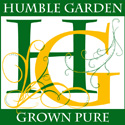
If you have ever delved into the homesteading “how to” book world, you will find that the best of this genre is able to expose you to enough information so that you have a sense for how to go deeper into any one subject. This is because homesteading can encompass a broad spectrum of skills that each require some good amount of book reading and a whole lot of practical experience.
Today I have an opportunity to review one such book,
The Backyard Homestead
, edited by Carleen Madigan and published by Storey Publishing, LLC.
Carleen was born into a self sufficiency oriented family and had the opportunity to grow up eating homegrown foods. She lives this way now and brings a comfortable even keeled passion to the subject in this book.
The book has a beautiful cover, graced by some neo-primitive design that welcomes you in. The book is information dense but not difficult to read and you can quickly glean what you were after when you opened it. The illustrations are a perfect fit, filled with little details but all relevant and simple. As an artist, I tend to focus on these sorts of things and I find these pen and ink vignettes a perfect pairing with the text.
One of the premises of the book, expressed on the front cover, is that you can “produce all the food you need on a 1/4 acre”. Obviously, this completely depends on what zone you live in and what sort of diet you eat.
The back cover says that on that 1/4 acre you can yield:
- 1,400 eggs
- 50 pounds of wheat
- 60 pounds of fruit
- 2,000 pounds of vegetables
- 280 pounds of pork
- and 75 pounds of nuts
I am not sure if thats all in a 1/4 acre or what you would get if you grew just the one thing. I like this estimation because it helps people be hopeful that there is a whole lot of possibility. Small farmers with diverse holdings are shown to have a higher productive output than huge monoculture factory vegetable farms.
If you are a novice homesteader or even intermediate – you might want to moderate your goals and start out with one or two sorts of food production, master those, then slowly add the next food. For example, start with a garden and some hens. Learn the vagaries of your microenvironment and the needs of your hens, what it takes to feed them and care for them. Learn if you can get away with hens in your setting. When you feel comfortable with the dynamics of these systems you can start adding more food to your back yard!
Before I go into deeper specifics I would like to say that I recommend this book very much. It has an uncomplicated, straightforward way of sharing an abundance of information that can help you understand homesteading and also to get started!
Chapters
- Start your own Backyard Homestead
- The Home Vegetable Garden
- Backyard Fruits & Nuts
- Easy, Fragrant Herbs
- Homegrown Grains
- Poultry for Eggs and Meat
- Meat and Dairy
- Food from the Wild
These are very broad chapter headings! Let me give you a sampling of the topics covered under each.
Start your own Backyard Homestead
- Homestead production plan on 1/10th acre and projected output
- 1/4 acre
- 1/2 acre
The Home Vegetable Garden
- Vegetable garden planning
- Rotation concepts
- Raised beds
- Succession planting
- How a garden develops through the seasons
- Container gardening
- Season extension
- Seed starting
- Vertical growing
- Harvesting and storing seeds
- Overview of vegetables
- Vegetable harvest, freezing, canning, fermenting, and drying
Backyard Fruits & Nuts
- Strawberries
- Raspberries and Blackberries
- Blueberries
- Grapes
- Wine making
- Growing fruit trees
- Edible landscaping
- Fruit drying
- Country wine making
- Cidermaking
- Vinegars
- Growing nut trees
Easy, Fragrant Herbs
- Growing herbs
- Preserving herbs
- 32 Essential herbs
- Herbal vinegars
- Herbal teas
Homegrown Grains
- Which grains to grow and how to
- Corn
- Wheat
- Wheat harvest and grinding, storage
- Cooking with grains
- Bread making
- Beer making
Poultry for Eggs and Meat
- Breed selection
- Chicken lifecycle
- Egg production
- Butchering
- Housing construction
- Turkeys
- Ducks & Geese
Meat and Dairy
- Goats
- How to milk a goat
- Sheep
- Cows: milking and butchery
- Pigs
- Rabbits
- Basic butchery and meat preservation considerations
- Sausage making
- Smoking
- Jerky making
- Cheese making
- Yogurt making
- Butter and Ice Cream making
Food from the wild
- Beekeeping
- Foraging
- Maple sugaring
I have really enjoyed this book. I curl up with it sometimes, in the morning while drinking coffee before the day gets started, and just open to random pages and learn something new.
I can attest that backyard homesteading is enormously satisfying. As I write this, I look out at our green vegetable garden, watch our chickens do their morning thing and smile as I see the goat kids racing around in their enclosure, the does sunning themselves in the morning cool and the llama walking around, taking a break from being a climbing platform for the goat kids who like to jump on her fluffy back and launch into the air (she is SO patient).
With this backyard homestead, it feels like my family has become quite extended to this outside world. We love our animals, the goats are super precious beings and the chickens are always interesting. More importantly, we eat organic fresh picked vegetables, we eat homegrown eggs from chickens fed a wide diet that includes greens from the garden and flax seeds for omega 3s, and raw milk and cheese from our own goats.
With this homestead, I feel very grounded and safe as I know that much of our food is extremely wholesome and pure.
I hope that you too can find even a small measure of this feeling as you garden and homestead.
Product Details
- Title: The Backyard Homestead

- Paperback: 368 pages
- Publisher: Storey Publishing, LLC (February 11, 2009)
- Language: English
- ISBN-10: 1603421386
- ISBN-13: 978-1603421386
- Product Dimensions: 8.9 x 7 x 1.1 inches
- Shipping Weight: 1.6 pounds
















